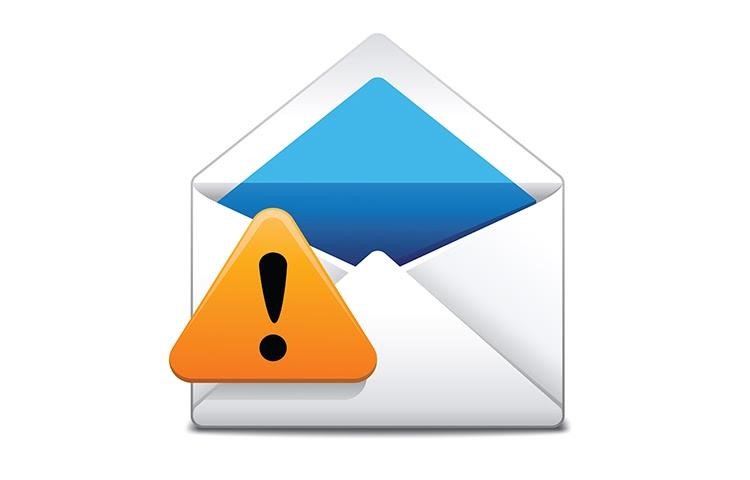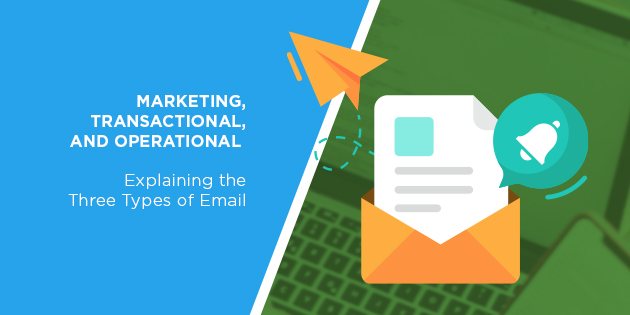The types of emails you send govern the kind of responses (or the lack thereof) that you get back. Find out about the three main types of emails and when to use them.
Did you know that there are different types of emails?
A lot of business owners don’t. They simply think of a subject for an email, write what they want to say, and then plug it into a campaign. And often, this means that they don’t get the results that they expected from the emails.
If you want your emails to generate the kind of response you want, it starts with knowing the three types of email:
- Marketing
- Transactional
- Operational
Each of these email types serves a different purpose when it comes to the customer journey you’re trying to create. And failure to understand this could lead to you sending the wrong type of email at the wrong time.
How bad can it be?
What’s going to happen is that your prospect becomes disengaged. That’s because they’re not seeing the types of messages they expect. And before you realize it, they’ve unsubscribed from your list and you’ve lost them.
This article aims to help you avoid that possibility. And to do that, we’re going to shine a light on each type of email and how you should use it in your business.
What Is a Marketing Email?
A marketing email is one that you send with specific intent. Usually, this means you want to express a commercial message relating to your business.
For example, you might send an email that contains tips on how to solve a problem. By doing that, you’re nurturing the recipient so that they move deeper into your marketing funnel.
Typically, you’ll send marketing emails to entire groups of people. You may have segments in your email list that mark out groups like new prospects, nurtured prospects, and lapsed prospects. Each will receive different marketing emails depending on their specific needs.
This specific intent also means that many of your sales emails actually slot under the marketing banner.
Some Examples of Marketing Emails
The following are all considered marketing emails based on the above definition:
- Welcome Emails – In this case, you’re sending a mass email to all new subscribers. This email also has the purpose of moving the recipient deeper into your funnel.
- Newsletters – A newsletter usually contains a lot of content related to your business and the products it sells. You may also include information about your team and any wins that your clients experience. In all cases, you’re using this information to market to the recipient.
- Promotions – Got a deal that applies to a whole group of people? Or maybe you’re offering a coupon to the first 20 people who register? As long as that deal appeals to more than one person, it’s an example of a marketing email.
- Sales Emails – You might think that the emails where you make a direct pitch deserve a category of their own. But the fact is, they slot under the marketing banner because there’s a specific intent involved. You want to make a sale with this email and you’re likely sending it, perhaps with the occasional tweak, to multiple people.
Now… Here’s where it can get a little bit tricky.
Your marketing emails can also cross over into the transactional email category. We’ll explain that in the next section.

What Is a Transactional Email?
A transactional email is a one-to-one email that does exactly what it says in the name. It completes a transaction that’s relevant only to the person who receives the email.
As such, you’ll use these types of emails more often when communicating directly with a prospect or customer. And typically, they’ll only trigger in your automation when that person takes a specific action.
The key difference here is that transactional emails get sent to an individual. That means no bulk emails fall under this category. However, a transactional email can still follow a template, which means it can look similar to an email you send to somebody else.
An invoice for an online purchase is a good example of this.
The invoice structure itself looks the same across all emails. But the specific details, such as the items purchased and the cost, will vary from invoice to invoice. This is what makes them transactional in nature. A recipient will only receive an invoice, relevant to just them when they make a purchase.
Some Examples of Transactional Emails
The invoice example mentioned above is just one of many that fall into the transactional category. Here are a few more:
- Welcome Emails – Yes, this is an example of a marketing email that can cross over into transactional. The reason for this is because a welcome email can also only be triggered when somebody signs up. This means a transaction has to occur, even if you’re sending the same email to every new prospect.
- Password Resets – Again, a password reset email will likely follow a template for all who need to see it. However, you’ll personalize that template to the specific recipient. What’s more, any links that take the recipient away from the email will direct them to their own account.
- Feedback Forms – Your customers aren’t as likely to leave feedback of their own volition as you’d like them to be. The way to solve that is to send a feedback request email. This email will trigger when somebody takes an action, such as by making a purchase. And again, it’s personalized to the recipient because it’s based on the specific action that they took.
- Order Updates – Once somebody places an order on a site, they expect to see regular updates. They want to know when it will arrive, what its shipping status is, and they want confirmation that you’ve processed the order. These are all transactional emails that only trigger when somebody places an order.
Between marketing and transactional email categories, we’ve covered most of what you’re likely to send out. However, there’s one more email type that you’ll use in specific circumstances.

What Is an Operational Email?
Operational emails are typically the rarest of the three. These are emails that communicate crucial information that everybody on your list needs to hear.
This means they’re similar to marketing emails. However, you don’t send operational emails with the intention of selling something. Instead, they simply inform the recipient of something that will affect them going forward.
Perhaps the key difference is that you can send operational emails to non-subscribers. That’s as long as you’re not using the email to market or sell something.
For example, let’s say that you’ve set a date for a webinar. You’re sending out marketing emails to try to get people to sign up. And you’re sending out transactional emails to those who do.
But then, something happens and you’re forced to change the date of the webinar.
Everybody needs to know about this change, whether they’ve signed up or not. So, you send an update out to the entire list. You will likely also send additional emails to the people who’ve already signed up. These emails may help them to rebook or get a refund.
All of the emails sent in relation to changing the date are operational.
Some Examples of Operational Emails
You’ve likely got a good grasp of what an operational email is from the above example. But here are a few more than you may use in your business:
- Event Information – These include emails about event parking, hotels, or registration on the day. These all relate to how the event will operate, thus giving the recipient more information.
- Customer Service Updates – Let’s say that there’s an issue at your warehouse that affects all of the items you need to ship. Or, one of your systems goes down, which delays other important systems. These are all customer service issues that your prospects and clients need to know about. As such, any emails you send in relation to them are operational.
You could say that these are emails that relate specifically to how changes to your business affect everybody else.
Which Type of Email Should You Send?
The answer to that question depends on the circumstances surrounding the email.
But now, you’re armed with the knowledge needed to create the right email for every situation. All that’s left is to make sure that those emails get to the people who need to see them.
That’s where we come in. The Automation Agency team works with you to set up the automation process for all of your email broadcasts. We can also help you to segment your contact list to ensure the correct people receive the email. And with the help of our design team, you can create emails that grab attention and get your message across.
Sending a task to the Concierge Service will get you started.
But if you’re not yet a member, talk to our Right Fit Chatbot to discover if we can work together.


